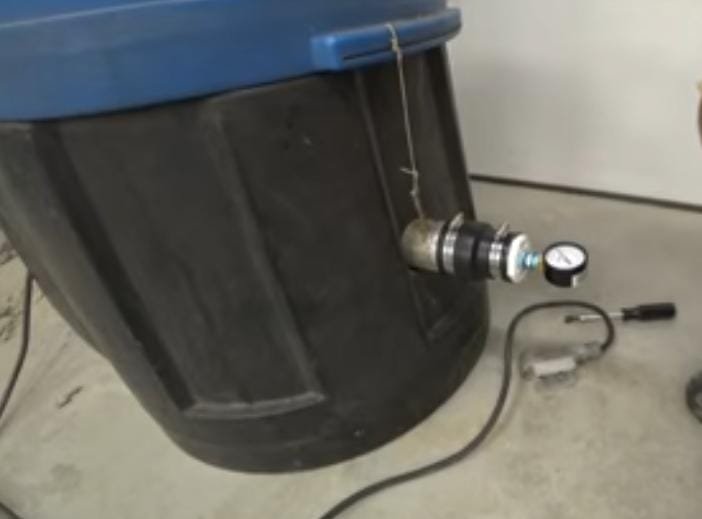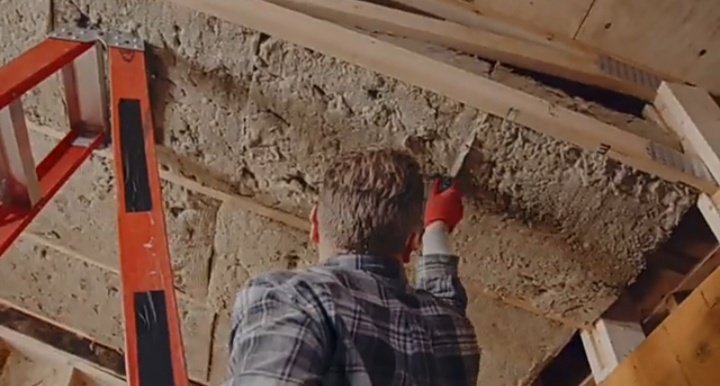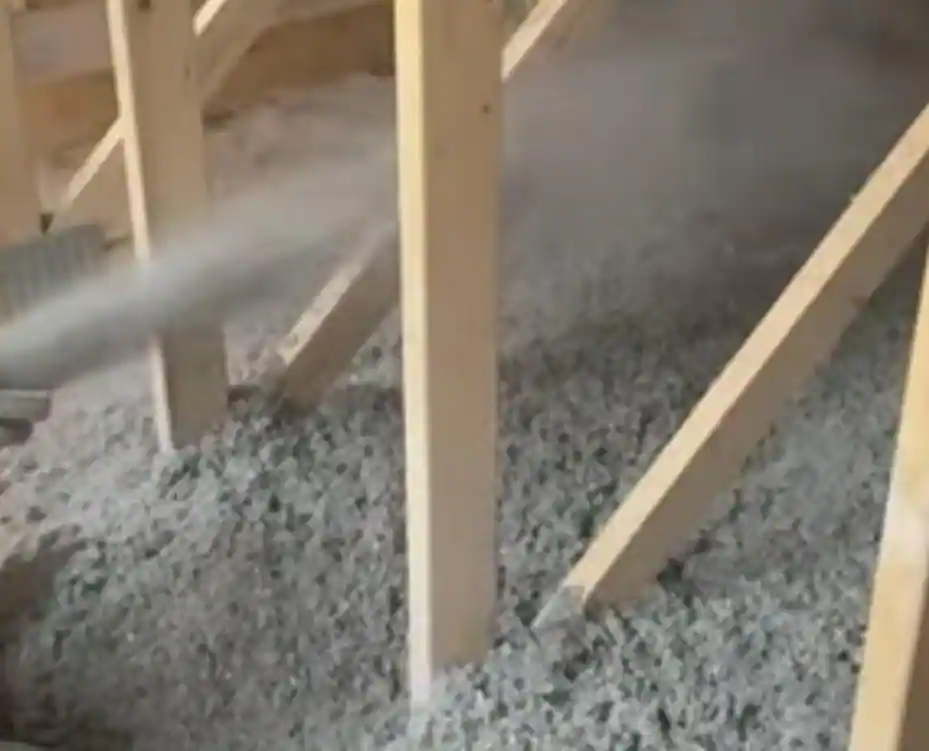Which is better attic insulation blown or rolled- Examining Attic Insulation: Rolled vs Blown
Adequate attic insulation is essential for enhancing your home’s comfort and energy efficiency. Improved comfort, lower energy expenses, and better temperature regulation are all benefits of a well-insulated attic.
It can be difficult to select the appropriate kind of insulation, though. The pros and cons of blown and rolled insulation will be thoroughly discussed in this in-depth guide, which will also help you make an informed choice for your house. You can insulate the attic by using acoustic baffles, for that read the the post Installing Insulation Baffles, just one click.
Understanding of Blown Insulation:
Often referred to as loose-fill insulation, blown insulation is created by utilizing a specialized machine to force tiny particles of mineral wool, cellulose, or fiberglass into the attic space. This technique efficiently fills in gaps and spaces by enabling even distribution and coverage.
Let’s see,
Which is better attic insulation blown or rolled
Examine both rolled and blown in insulation
Benefits of Insulation that Blows:
You will get the following best benefits after using this blown-in insulation to insulate your attic very effectively.
Event Coverage:- Which is better attic insulation blown or rolled
Blown insulation fills in gaps and nooks that other forms of insulation can find difficult to access, leaving a smooth surface.
Greater R-Value:
Compared to rolled insulation, blown insulation often has a greater R-value per inch, offering superior thermal resistance and energy efficiency.
Simple Installation:
Blown insulation requires less time and labor to install because it can be swiftly done by experts with the right tools.
Efficient Air Sealing:
By forming a tighter barrier, blown insulation helps minimize heat loss and boost energy economy.
The disadvantages of blown insulation
Like other materials, blown-in insulation also has some disadvantages, let’s see which are-
Professional installation required-
It is usually necessary to hire a professional installer for blown insulation because correct coverage and density can only be achieved with specific tools and knowledge.
Limited Do It Yourself Options:
Although some homeowners may try installing blown insulation themselves, it can be difficult to achieve the right coverage and density without the right tools and knowledge.
Setting Over Time-
Blown insulation has the tendency to settle over time, which could diminish its efficiency and necessitate routine maintenance or reapplication.
Understanding of Rolled Insulation:

Also referred to as batt insulation, rolled insulation is composed of mineral wool or fiberglass and is supplied in pre-cut sheets or rolls. These energy-efficient and thermally resistant insulation batts are made to nestle in between attic rafters or joists.
Rolled insulation benefits:
You will get the following benefits after using the rolled insulation to insulate your attic-
DIY-Friendly:- which is better attic insulation blown or rolled
With the right tools and knowledge, rolled insulation can be installed between attic rafters or joists, making it comparatively simple for do-it-yourself enthusiasts to install.
Stability:- Rolled insulation benefits
Rolled insulation tends to hold its density and form over time, reducing the chance of settling and guaranteeing reliable performance.
Cost-Effective:
Homeowners wishing to upgrade attic insulation may find rolled insulation to be a more affordable option than blown insulation.
The disadvantages of rolled insulation Inconsistent Coverage:
You will face the following disadvantages after using the rolled insulation to insulate your attic-
Inconsistent Coverage-
If rolled insulation is not put correctly, it may leave gaps and voids that cause thermal bridging and decreased energy efficiency.
Restricted Access:
Rolled insulation could not be as successful in reaching the attic’s nooks and crannies, which could leave some regions uninsulated.
Compression:
Rolling insulation’s efficiency can be diminished and its heat resistance compromised by improper installation or excessive compression.
Selecting or choosing the Appropriate right Attic Insulation:
Take into account the following aspects while choosing between blown and rolled insulation for your attic:
Budget:- how much does blown in attic insulation cost
Assess your financial situation and decide how much you can afford to spend on attic insulation.
Access and Space:
Evaluate your attic space’s design and accessibility to decide which insulation technique would be most useful.
Energy Efficiency Objectives:
When choosing insulation, take into account your desired level of thermal resistance (R-value) as well as your energy efficiency objectives.
Installation Considerations:
Make a decision about whether you want to DIY the installation or hire professionals.
Effective attic insulation options are provided by both blown and rolled insulation, each with pros and cons of its own. The optimal option ultimately comes down to personal tastes, financial constraints, and needs. Whether you choose blown insulation for its smooth finish or rolled insulation for its easy do-it-yourself installation, adding adequate attic insulation is a wise investment that may boost comfort, lower energy expenses, and increase the overall effectiveness of your house.
In conclusion and to provide you bottom line, we like to say, that blown and rolled insulation provide efficient means of attic insulation and home energy efficiency enhancement. In the end, the decision between the two is based on elements including cost, attic layout, convenience of installation, and personal taste.
For your attic, blown insulation can be a superior choice if you value performance in difficult-to-reach regions, uniform coverage, and ease of installation. However, rolled insulation can be the better option if you want a do-it-yourself project, more control over thickness and consistency, and the ease of integrated vapor barriers.
How To Insulate Attic With Blown In Insulation
An All-Inclusive Guide to Using Blown-In Insulation to Insulate Your Attic
First of all, The attic is one of the best places to concentrate your efforts when it comes to energy efficiency in your house. An attic’s proper insulation helps keep interior temperatures tolerable, lowers energy costs, and stops heat gain or loss. Because it is simple to install and efficient, blown-in insulation is a common option for attic insulation. We’ll walk you through the process of utilizing blown-in insulation to insulate your attic in this article.
Evaluating Your Attic:- How to insulate attic with blown in insulation
It’s important to determine the state of your attic right now before starting the insulation process. Seek out any indications of damage, leaks, or existing insulation. To maintain the health of the attic, make sure that nothing is obstructing the soffits or vents.
Selecting Appropriate Insulation:
Several materials can be used for blown-in insulation, such as mineral wool, cellulose, and fiberglass. Every kind has pros and downsides to take into account. While cellulose insulation is environmentally benign and offers superior thermal performance, fiberglass insulation is non-combustible and moisture-resistant. Whichever insulation you choose for your attic, keep things like moisture resistance, fire resistance, and R-value in mind.
Getting Materials and Equipment Ready:

Assemble all the tools and materials required before beginning the insulation procedure. This could consist of:
1. Insulation material blown in
2. blower machine for insulation
3. protective equipment (mask, goggles, and gloves)
4. Measurement tapes or rulers
5. A utility knife- how to insulate attic with blown in insulation
6. Foam sealant or caulk (to seal air leaks)
Getting the Attic Ready:- How to insulate attic with blown in insulation
Remove any objects, clutter, or impediments from the attic that can obstruct the insulation installation procedure. To stop air from leaking in, caulk or foam sealant should be used to fill any gaps, leaks, or cracks.
Installing Insulation:
In accordance with the manufacturer’s instructions, begin by loading the insulation material into the blower machine. To ensure even coverage throughout the attic, start in the furthest corner and work your way back. To ensure uniform insulation depth, use a measuring tape or ruler and generally aim for the R-value that is advised for your area.
Filling Gaps and Spaces:

Since ductwork, vents, chimneys, and electrical fixtures are frequently the sites of air leaks, pay close attention to these areas. To maintain a continuous thermal barrier, fill in voids and cracks using the insulation blower nozzle.
Safety precautions:
It is crucial to put safety first when working with blown-in insulation. Put on safety gear, such as a mask, goggles, and gloves, to prevent discomfort from insulation fibers. Make sure the attic has enough ventilation by utilizing exhaust fans or opening windows.
Post-Installation Inspection:
After the insulation is put in place, make sure it covers the entire attic and take care of any uneven or missed regions. To ensure proper ventilation, make sure that the soffits and attic vents are clear of obstructions.
Monitoring and Maintenance:
To guarantee your attic insulation’s long-term efficacy, keep a regular eye on its state. You have need to Check for symptoms of moisture, mold, or insect infestation regularly, and take quick action to resolve any issues found. If more insulation is required to ensure optimal energy efficiency, think about doing so.
We can say, that adding blown-in insulation to your attic is a reasonably priced as well as effective method of raising the comfort and energy efficiency of your house. You can guarantee a successful insulation installation that offers long-lasting benefits for years to come by adhering to these specific measures and considerations. To get the most out of your attic insulation and enjoy a more comfortable living space, put safety, correct installation methods, and continuous maintenance first.
How Much Does Blown In Attic Insulation Cost
A Complete Guide to Understanding the Cost of Blown-In Attic Insulation
Introduction: Proper insulation is necessary for keeping a cozy and energy-efficient house. Blowing-in insulation, also referred to as loose-fill insulation, is a common choice for attic insulation. A few advantages of blown-in insulation are its superior coverage and ease of installation. According to research, Many homeowners are curious about the cost of this insulating technique, though. So, here in this passage, We’ll examine the variables that affect blown-in attic insulation prices in this guide, along with advice to help you make wise choices for your house.
Estimates of Cost:- how much does blown in attic insulation cost
Fibreglass Blown-In Insulation: How much does blown in attic insulation cost
The typical cost per square foot of attic space for fiberglass blown-in insulation is between $1.00 to $1.50. Costs for materials and installation are included in this quote.
Cellulose Blown-In Insulation:
Costing between $1.50 and $2.00 per square foot, cellulose blown-in insulation is often a little more expensive. Nonetheless, this insulation is known as eco-friendly as well as provides good thermal performance.
Mineral Wool Blown-In Insulation:
At an average cost of $2.00 to $3.00 per square foot, mineral wool blown-in insulation is the most expensive alternative. Although it could cost more, mineral wool has better soundproofing and fire-resistant qualities. In conclusion, homeowners wishing to increase their homes’ comfort and energy efficiency would be wise to invest in blown-in attic insulation.
Blown In Attic Insulation Companies

Owens Corning:- blown in attic insulation companies
Insulation products are manufactured by the well-known company Owens Corning. They provide blown-in attic insulation options, which are renowned for being long-lasting and efficient.
CertainTeed:- blown in attic insulation companies
Another well-known producer of insulation materials, including blown-in attic insulation, is CertainTeed. Their energy-efficient and high-quality products are well-known.
Johns Manville:
Known for its reliable insulation solutions, Johns Manville provides blown-in attic insulation among other insulation solutions for a variety of applications. Their products are mostly renowned for their dependability as well as performance.
Knauf Insulation:- blown in attic insulation companies
Knauf Insulation is well known and multinational producer of insulation materials, specializing in blown-in attic insulation. They provide cutting-edge technologies meant to boost comfort along with energy efficiency.
Greenfiber:
Greenfiber is a company that specializes in eco-friendly insulation solutions, such as attic blown-in insulation. Their products are renowned for their ability to effectively reduce energy usage and are composed of recycled materials.
Applegate Insulation:
Blowing-in insulation solutions for attics and other applications are provided by Applegate Insulation. Their primary objective is to offer superior insulating materials that adhere to energy efficiency regulations.
Guardian Building:
Building supplies are available from Guardian Building Products, which also sells insulation for use in both residential and commercial settings. They offer blown-in insulation options that are renowned for their dependability and efficiency.
At last, we should say that it’s crucial to remember that product and service availability can change based on where you live. It’s also advised to investigate and contrast various businesses’ offerings to see which best fits your needs and price range.
Sum of, which is better attic insulation blown or rolled blown in attic insulation companies
The attic is one of the best places to concentrate your efforts when it comes to energy efficiency in your house. An attic’s proper insulation helps keep interior temperatures tolerable, lowers energy costs, and stops heat gain or loss. Attic insulation can help to- Improve comfort, lower energy expenses, and better temperature regulation are all benefits of a well-insulated attic. It can be difficult to select the appropriate kind of insulation.
Do let us know how you feel about this information by commenting.
Like our Facebook page and follow for other updates like this.

